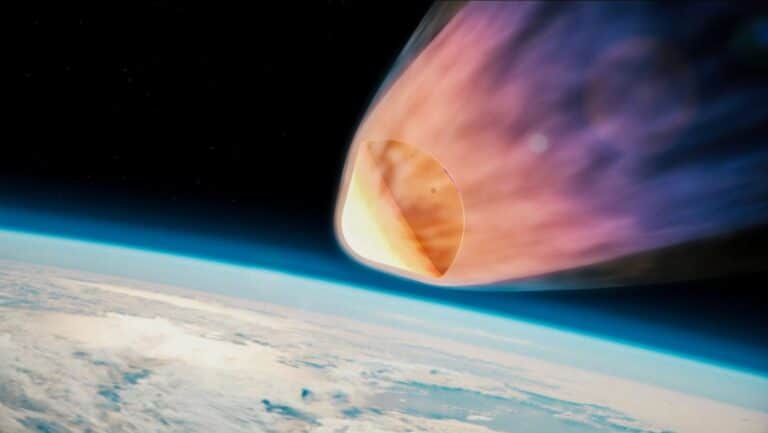Improving Aerospace Communication: Overcoming Blackouts with Electron-Neutral Collisions

The progression of aerospace technologies has ushered in a new era of high-speed vehicles. Yet, they face a daunting challenge: maintaining reliable communication through the dense plasma created at high velocities. This phenomenon, known as a communication blackout, severely disrupts radio wave transmission, posing a significant hurdle for vehicles re-entering Earth’s atmosphere or operating within the ionosphere.
The Challenge of Communication Blackout
Communication blackouts are due to ionized media enveloping a vehicle, which reflects radio signals, thus causing communication to be difficult or impossible for some time. This interruption in communication can critically impact vehicle operation and safety, making it a focal issue for aerospace engineers and communication specialists.
Research Findings and Applications
Recent studies have illuminated a promising solution: leveraging electron-neutral collisions within the plasma to enhance radio wave transmission. Through sophisticated finite difference time domain (FDTD) simulations and theoretical analysis, researchers have identified a “collision frequency window” that can significantly improve signal clarity below the plasma frequency, offering a strategic approach to mitigate the effects of plasma shielding.
The Concept and Its Implications for the Aerospace Industry
This breakthrough suggests that by adjusting the properties of the plasma around the vehicle, specifically by increasing the rate of electron-neutral collisions, it’s possible to foster conditions conducive to radio transmission. This approach not only opens new avenues for research but also holds the potential to revolutionize communication strategies for high-speed aerospace vehicles, making it a cornerstone of future technological advancements in the field.
Conclusion
The study “Improving Radio Transmission Through a Dense Plasma via Electron-Neutral Collisions” represents a pivotal step forward in overcoming one of the primary communication challenges faced by the aerospace industry. Authored by a dedicated team of researchers, this work illuminates a novel approach to mitigating radio blackouts. It offers practical solutions that could significantly enhance high-speed aerospace vehicles’ safety, reliability, and performance.
For an in-depth understanding of this innovative research and its implications for aerospace communication technologies, we invite our readers to download the complete article. Additionally, to further explore and simulate these phenomena, we offer a 30-day evaluation of our state-of-the-art simulation software, empowering engineers and researchers in their quest to advance aerospace communication strategies.
References
Harid, V., Main, D., Gołkowski, M., Sahai, A., Wewerka, J., Chilukury, S. T. R., & Jauregui, E. (2022). Improving Radio Transmission Through a Dense Plasma via Electron-Neutral Collisions. URSI Radio Science Letters, 4, 1-5. DOI: 10.46620/22-0024
